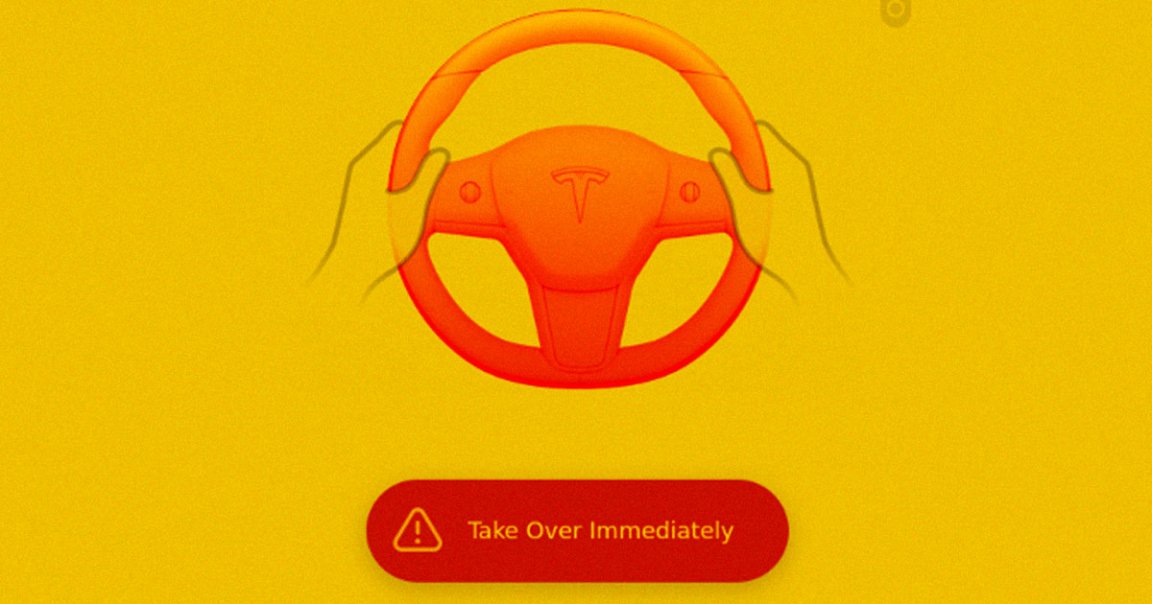
In an effort to combat misuse of its so-called Autopilot software, Tesla has made it harder for drivers to skirt around safety features, forcing them to pay attention to the road at all times.
While that may sound like a good idea, especially given the hundreds of collisions currently being investigated by US regulators involving the driving assist feature, Tesla owners are airing their grievances with the new update, arguing it’s effectively made Autopilot useless.
Via a December over-the-air software update, Tesla introduced new controls and alerts, which make it far more obvious for drivers when Autopilot is engaged and take other steps to ensure driver attentiveness.
As a result, the Wall Street Journal reports, drivers are now complaining that the self-driving system has become too annoying. Some are even going as far as to say that the controls are making the experience more dangerous, not less.
“To see the visual nag, it requires you to take your eyes off the road to look at the screen,” owner Larry Pecan told the WSJ, “which itself can cause a nag.”
Tesla has long been under scrutiny over its Autopilot software, with critics pointing out that the company’s misleading marketing could give drivers a false sense that the system can actually autonomously drive the vehicle.
“They designed a super convenient system that from a driver’s perspective is fantastic,” Steven Cliff, a former top administrator at the National Highway Traffic Safety Administration, told the WSJ. “But from a safety perspective, that’s terrible.”
Over the years, regulators have slowly dialed up the pressure, demanding that the company’s driver assistance feature can’t so easily be circumvented by drivers.
And while drivers are now saying their Teslas are excessively nagging them, some experts are saying the EV maker hasn’t gone far enough with its latest update.
Consumer Reports, which found in 2021 that it was shockingly easy to drive a Tesla without anybody in the driver’s seat at the time, is arguing that the December update still hasn’t addressed glaring safety concerns.
“We don’t think that the recall, as far as what Tesla did to address these concerns, fixed the issues that we have reported on in the past,” associate director of vehicle technology at Consumer Reports’ auto test center Kelly Funkhouser told the WSJ.
Judging by the reactions from Tesla drivers, however, the update is exceedingly unpopular.
“The new Autosteer is the absolute worst driving experience I’ve ever had,” one driver complained in a tweet, referring to an Autopilot feature that allows the vehicle to follow the road by itself.
Drivers quickly discovered following the release of the update last month that Autopilot will be disabled for a week if a driver ignores alerts or exceeds the maximum speed limit with the feature turned on a total of five times.
“Can’t even look at the map or scan out the windows without the annoying beeping,” the driver added. “Time to sell my Tesla.”
“It is easier to just drive than it is to spend all my energy trying to avoid getting threatened by my car,” another irate driver wrote, referring to the new version of Autosteer.
The public outrage raises questions about Tesla’s apparent desire to appease regulators. Are these reportedly overbearing “nags” a sign that Tesla is taking their safety concerns seriously?
Or is it a matter of malicious compliance, with Tesla CEO Elon Musk, who has long staunchly opposed new safety measures, attempting to rally his carmaker’s customer base against regulators by making the feature excessively irritating?
In a world where the vast majority of cars are still being driven by humans, it’s hard not to see Tesla’s latest update as an important first step to ensure that its customers aren’t endangering other people on public roads.
Complain as they may, paying attention to the road at all times while driving a vehicle should be a given.
More on Tesla: Tesla Driver Forced to Pay After Killing Two People on Autopilot